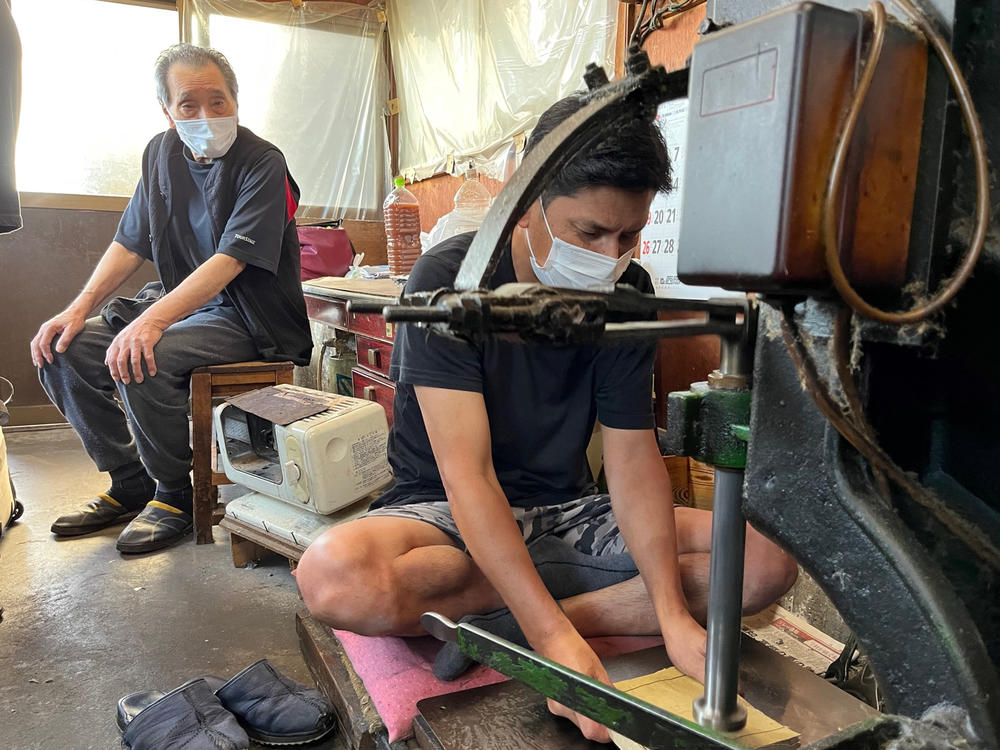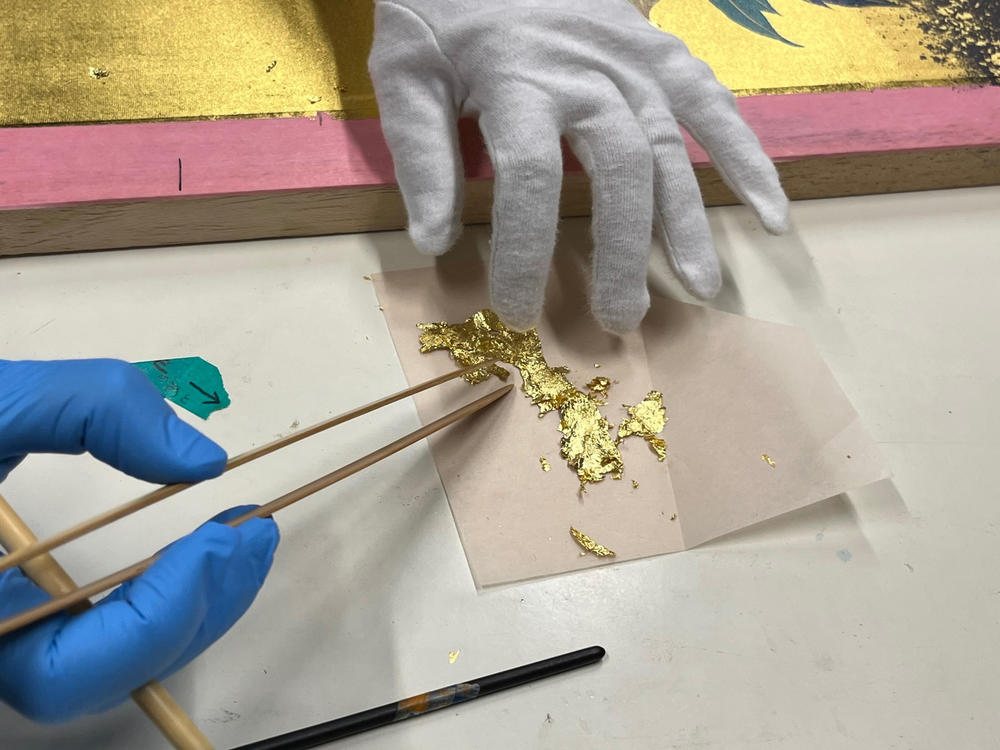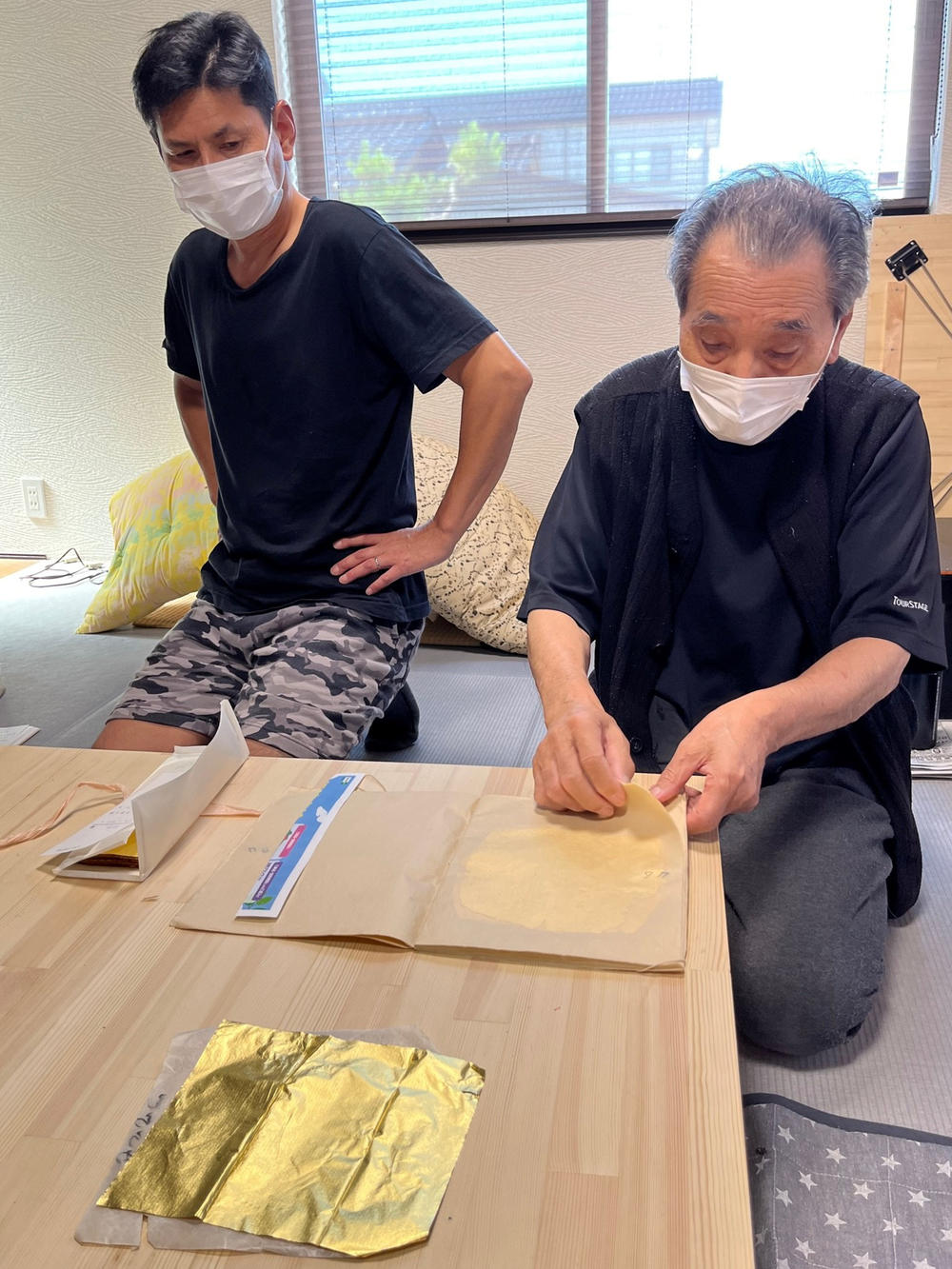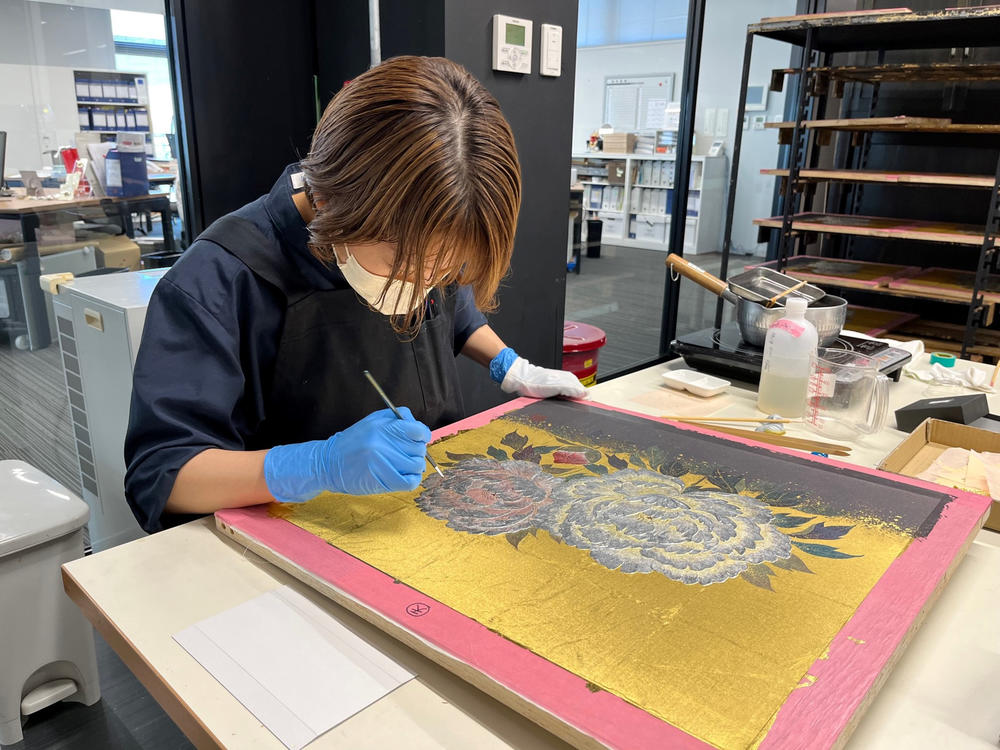Section Branding
Header Content
Japan's traditional crafts are struggling to survive the country's population decline
Primary Content
KANAZAWA, Japan — In a cramped room, Shinichi Netsuno sits cross-legged on a thin mat and guides a stack of specialized paper as it's pounded by a mechanical hammer. In between each sheet is a small square of gold leaf.
The stack will be beaten over the course of several days until the gold leaf is whisper-thin. It can then be applied to jewelry, shrines, even food.
Everything about gold leaf requires a great deal of skill and time. Most of the process is done by hand, even making the paper, says Yoshikazu Netsuno, the owner of this small, family-run company.
"We soak the paper in a mixture of lye, egg whites and ashes made from rice," he says. "It's repeatedly soaked and dried for one year, which helps make it durable. The paper is then hammered out for about three months to make it smooth." Then they use it to help press the gold leaf flat.
Netsuno says the smoother the paper, the better the gold leaf. The 75-year-old has been working with gold leaf for six decades, following in his father's and grandfather's footsteps. His tiny factory is really nothing more than a small hut behind his home in Kanazawa.
The western Japanese city produces nearly all of the country's gold leaf. But now the industry is threatened because there aren't enough young people seeking to take over the businesses.
The same situation is being played out across Japan, where decades of declining birth rates are resulting in a crisis for tens of thousands of family-owned small businesses. Everything from restaurants and garages to repair shops and small factories are going under at an alarming rate because there is no one to take over from the aging owners.
Yasuhiro Ochiai, an associate professor at the University of Shizouka who specializes in what's known as business succession, says smaller businesses are the economic engine of Japan. Many of them are run by people older than 70.
Ochiai says there are about 4 million small and medium companies in Japan but their numbers are plummeting, with roughly 40,000 going under each year, according to a recent government report.
"If this continues, it will create a large impact on Japan's economy," he says. "When these businesses close because there is no successor, the skill and technology are lost. It also hurts the local economy."
Also at risk are centuries-old traditions and skills, handed down from one generation to another.
Netsuno, at the gold leaf workshop, says in the past it was quite natural for sons to take over the business from their fathers in Kanazawa.
"My son is going to take over this business, so in our case, we had a successor," he says. "Many other artisans' families in Kanazawa were not so lucky ... and they went out of business."
Netsuno says when he was young, there were more than 300 gold leaf craftsmen in Kanazawa. Now there are fewer than 20.
But there are moves to stem the tide, including a new program by the local government to train craftspeople in Kanazawa.
Mio Oketani is doing one of those apprenticeships at the Netsuno factory. The 24-year-old says she's thrilled, even though she admits she's a bit nervous navigating the hammering machine, where one slip can cost you a thumb.
"I was majoring in Japanese painting in university and discovered that gold foil is used in paints and artifacts," she says. "It's beautiful and so I wanted to become a craftsman to make gold foil to keep these skills alive."
But only four new applicants are allowed into the training program every three years. Naohisa Yamaga, the secretary general of the Cooperative Association of Gold Leaf Commerce and Industry, says it can take at least a decade to become a full-fledged craftsman.
"To be honest, we don't know what will happen in the future," he says. "It all depends on the willingness of those four interns — whether they want to stay on in this business."
He says many young people want white-collar jobs where they can make more money, instead of being craftspeople.
"Also, the demand for gold leaf is going down," he says. "It used to be used for Buddhist temples and altars, but there are not so many anymore."
Yamaga says the industry needs to do more to develop new markets in Japan and other countries.
Across town from the modest Netsuno gold leaf factory is Hakuichi — a company that makes products with gold leaf. It's a sleek, modern, two-story building with floor-to-ceiling windows.
The lobby shimmers with all things gold leaf — ceramics, paintings, even cosmetics. The mirrors in the ladies washroom are flecked with gold leaf to remind employees of the value and diversity of their product, according to a guide — whose eye shadow is also adorned with gold flecks.
On the factory floor, workers painstakingly apply gold leaf to clocks and ceramic lucky cats, which are destined for China.
Hakuichi's CEO, Tatsuya Asano, says there's an effort to broaden the appeal of gold leaf products, even among other Japanese companies.
"Usually they don't understand the things we are making here," he says. "But once they look at our range of products, they kind of change their idea to respect what we are doing."
Copyright 2022 NPR. To see more, visit https://www.npr.org.




